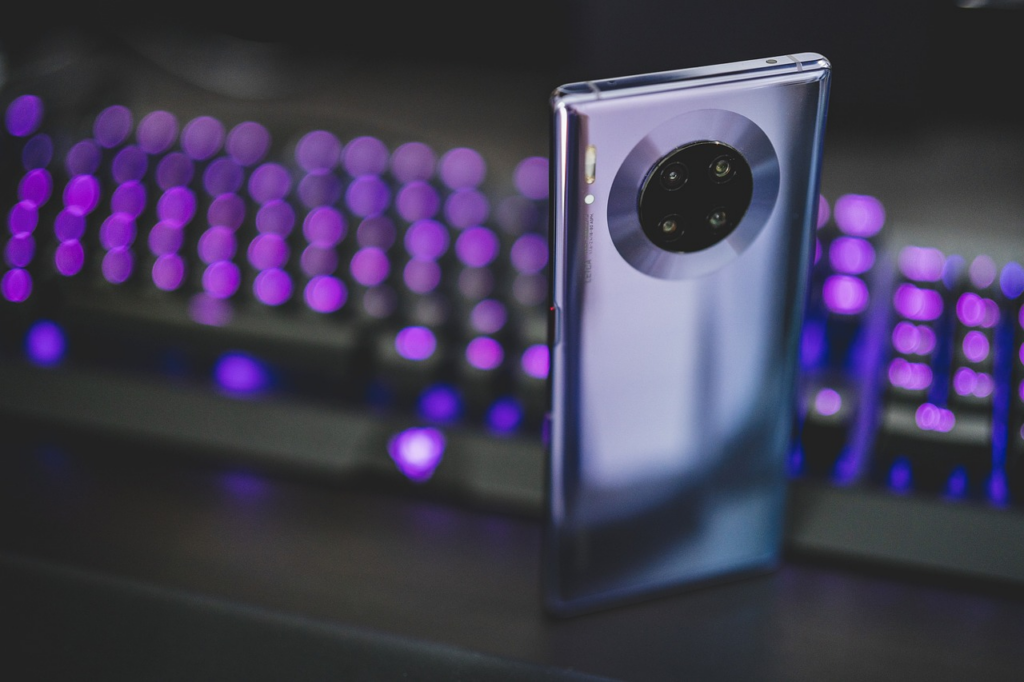Advertisement
In today's age, where connectivity is the backbone of digital society, 5G technology is emerging as a game changer. With its promise of ultra-fast connection speeds, minimal latency and the ability to connect a multitude of devices, 5G is set to revolutionize the way we interact with the digital world.
What is 5G?
5G, short for fifth generation, is the latest evolution in wireless communication network technology, succeeding 4G (fourth generation). It is a technology designed to offer significantly faster connection speeds, lower latency (the response time between sending and receiving data) and improved capacity to connect a wider variety of devices simultaneously compared to previous generations.
Advertisement
This technology aims to meet the growing demands for connectivity in an increasingly digital and interconnected world. With 5G, users are expected to experience much faster internet speeds on their mobile devices, providing a smoother browsing experience, faster content downloads, better application performance and support for a wider range of emerging technologies, such as the Internet of Things (IoT), virtual reality (VR), augmented reality (AR) and vehicle-to-vehicle communication (V2V).
Speed and Latency
Speed and latency are two fundamental aspects of 5G technology that play crucial roles in improving the user experience and enabling a range of new applications and services. Let's explore each of these concepts in more detail:
Advertisement
Speed
The speed of 5G technology is remarkably superior to previous generations of mobile networks. With theoretical speeds of up to several gigabits per second (Gbps), 5G offers an extremely fast mobile internet experience. This means that users can enjoy much faster data downloads and uploads on their devices, whether they're downloading applications, streaming high-resolution videos, making HD-quality video calls or accessing heavy web content.

This increased speed is possible thanks to the use of higher radio frequencies and the implementation of technologies such as MIMO (Multiple Input, Multiple Output) and beamforming, which allow a greater volume of data to be transmitted simultaneously and better use of the available frequency spectrum.
What's more, the fast speed of 5G not only improves the user experience on smartphones and tablets, but is also key to boosting new applications and services that rely on high-speed data transfer, such as virtual/augmented reality, cloud gaming, remote surgery, autonomous vehicles and much more.
Latency
Latency refers to the time it takes for data to travel from one device to another on the network. In other words, it is the perceived delay between sending a command or request and receiving the corresponding response. Latency is measured in milliseconds (ms), and for many time-sensitive applications, such as online gaming, remote surgery and communication between autonomous vehicles, it is crucial to keep latency as low as possible.
5G technology aims to significantly reduce latency compared to previous generations of mobile networks. With latencies potentially lower than one millisecond (ms), 5G offers almost instantaneous responses, making it possible for time-sensitive applications to work more effectively and responsively.
This low latency is achieved by optimizing networks and communication protocols, as well as implementing advanced technologies such as edge computing and network slicing, which allow for more direct and efficient communication between devices and servers.
Applications and benefits
The possibilities enabled by 5G are vast and impact a wide range of sectors and applications. Here are just a few of the ways in which 5G is transforming the digital world:
1. Health
The implementation of 5G technology in the healthcare sector is unleashing a series of significant advances that are transforming the way healthcare is delivered and received. Let's explore in more detail how 5G is impacting healthcare:
Remote Diagnostics
With 5G, healthcare professionals can perform remote diagnoses more accurately and efficiently than ever before. This is especially beneficial in remote or underserved areas, where access to medical specialists can be limited. Doctors can use advanced technologies, such as high-resolution images and real-time video streaming, to examine patients remotely, make accurate diagnoses and recommend appropriate treatments.
Robot-assisted surgery
5G is opening up new possibilities in robot-assisted surgery, allowing surgeons to perform complex procedures remotely with unprecedented precision. With 5G's low latency, the surgeon's movements are transmitted instantly to the surgical robot, ensuring precise and safe execution of surgery, regardless of the physical location of the patient or the surgeon.
Remote Patient Monitoring
5G is facilitating remote patient monitoring, allowing healthcare professionals to constantly monitor patients' vital signs and state of health without the need for hospitalization. Connected medical devices can send data in real time to healthcare systems, alerting doctors to any anomalies or changes in the patient's condition and enabling rapid interventions when necessary.
Telehealth and Virtual Consultations
With 5G, telehealth and virtual consultations are becoming more accessible and effective than ever. Patients can consult with doctors and specialists from anywhere, using mobile devices or computers, without the need to physically travel to a doctor's office. This not only saves time and money for patients, but also broadens access to healthcare for populations in remote areas or with limited mobility.
Research and Innovation
5G is boosting medical research and innovation by enabling fast and secure data sharing between medical institutions and research centers around the world. This accelerates progress in the development of new treatments, therapies and drugs, and enables international collaborations that were previously limited by communication capacity.
2. Industry
5G technology is transforming the industrial sector by offering a range of benefits that improve the efficiency, productivity and safety of manufacturing processes. Let's explore in more detail how 5G is impacting industry:
Advanced Automation
With 5G, factories can implement advanced automation systems more effectively and comprehensively than ever before. Sensors and connected devices can collect and transmit real-time data on machine performance, environmental conditions and product quality. This allows for continuous supervision and a rapid response to any problems that may arise, thus optimizing manufacturing processes and reducing unplanned downtime.
Smart Manufacturing
5G is driving the adoption of smart manufacturing, where factories are equipped with advanced technologies such as collaborative robotics, 3D printing, augmented reality and the Industrial Internet of Things (IIoT). With 5G, these devices can communicate with each other quickly and reliably, coordinating their activities and adapting dynamically to changing production conditions. This allows for more flexible, personalized and efficient production, better meeting customer and market demands.
Predictive maintenance
5G is enabling real-time predictive maintenance, where industrial equipment can be continuously monitored for condition and performance. Data analysis algorithms can detect early signs of failure and send alerts to operators before a catastrophic breakdown occurs. This not only reduces the costs associated with corrective maintenance, but also extends the life of the equipment and improves safety in the workplace.
Logistics and Supply Chain
5G is improving the efficiency of logistics and the supply chain, enabling real-time tracking of products and goods along the entire value chain. With 5G, companies can monitor the movement of goods, optimize transport routes and coordinate delivery more efficiently, reducing operating costs and improving customer satisfaction.
Energy and Sustainability
5G is facilitating the adoption of energy and sustainable technologies in industrial operations. With real-time monitoring and remote control enabled by 5G, factories can optimize energy use, reduce waste and minimize their environmental impact. This not only helps companies to meet regulatory and sustainability demands, but also to reduce their operating costs in the long term.
3. Transportation
The impact of 5G technology on the transport sector is profound and multifaceted, with the potential to revolutionize the way we move and interact with vehicles and transport systems. Let's explore in more detail how 5G is transforming transportation:
Autonomous vehicles
5G plays a crucial role in enabling autonomous vehicles, providing the connectivity needed to enable communication between vehicles (V2V) and between vehicles and infrastructure (V2I). With 5G, vehicles can exchange real-time information about their position, speed, direction and road conditions, enabling safer and more efficient driving. In addition, 5G enables the transmission of large volumes of data, such as high-definition maps and real-time traffic updates, for autonomous navigation systems.
Intelligent Transportation Systems
5G is driving the development of intelligent transportation systems (ITS), which use advanced technologies to improve the safety, efficiency and sustainability of transportation.
With 5G, cities can deploy sensors and connected devices throughout the road infrastructure to monitor traffic, detect congestion, manage traffic lights and coordinate the flow of vehicles more effectively. This helps reduce travel times, fuel consumption and pollutant emissions, as well as improving road safety.
Onboard Connectivity
5G is providing an unprecedented connectivity experience inside vehicles, turning them into true digital hubs on wheels. With 5G, passengers can enjoy fast and reliable high-speed internet access on their mobile devices while on the move.
In addition, 5G allows vehicles to be permanently connected to the cloud, enabling over-the-air (OTA) software updates, multimedia content streaming and on-board entertainment services.

Autonomous delivery
5G is facilitating the development of autonomous delivery services, where autonomous vehicles are used to transport goods and parcels directly to recipients. With 5G, vehicles can be monitored and controlled remotely in real time, ensuring safe and efficient delivery.
In addition, 5G enables communication between delivery vehicles and logistics management systems, allowing for more efficient routing and faster delivery.
Urban Mobility
5G is improving urban mobility by facilitating access to a variety of transportation options, including bike sharing, electric scooters and shared cars. With 5G, users can easily locate, book and unlock vehicles using mobile apps, making last-mile transportation in urban areas more convenient and accessible.
4. Entertainment
In the field of entertainment, 5G is offering immersive and interactive experiences like never before. From virtual and augmented reality to seamless high-definition streaming, 5G is taking digital entertainment to new heights.
Challenges and considerations
Despite all its promise, 5G also faces significant challenges. From the infrastructure needed to support the technology to privacy and security concerns, there are many aspects to consider when implementing 5G on a large scale.
In addition, the global rollout of 5G is occurring at different paces, with some countries leading adoption and others facing regulatory and financial obstacles. This can result in disparities in access to the technology and the creation of a "digital divide" between regions.
Redefining the limits of connectivity
5G is redefining the limits of connectivity and unleashing a new world of technological possibilities. With ultra-fast speeds, minimal latency and the ability to connect billions of devices, 5G is shaping the future of technology and driving innovation in a variety of sectors. However, it is important to address the challenges and considerations associated with implementing 5G to ensure that everyone can reap the benefits of this technological revolution.
See also: 10 apps to password-protect your apps and ensure more privacy
March 29, 2024

She has a degree in Languages - Portuguese/English, and is the creator of the Escritora de Sucesso website. As a writer, she seeks to expand everyone's knowledge with relevant information on various subjects. At SoMuchToSayToday, she brings news and content ranging from entertainment to the country's economic situation.


